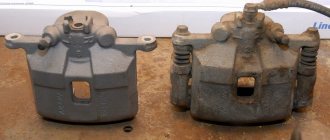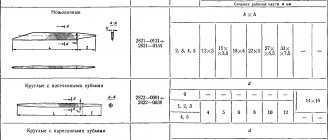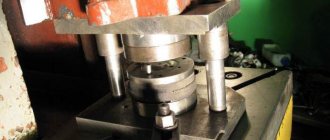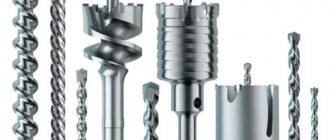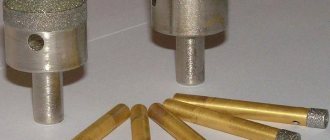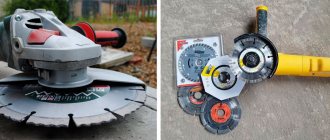Every woodworking craftsman has several types of chisels in their toolkit that have their own purpose. A chisel is an indispensable tool when working with wood blanks. With its help you can make carvings of varying complexity.
Specialized stores offer the purchase of both ready-made sets of chisels and single copies of various models.
Typing chisels
A chisel is a cutting tool necessary for making wood blanks. The chisel is used when performing expressive or silhouette carvings. The tool varies in type, configuration, parameters and purpose. When performing a particular operation, it is important to choose the right chisel. Working with a chisel is done manually.
Using a chisel you can perform the following operations:
- chamfer;
- clean the groove;
- cut out the ornament;
- gouge out a hole;
- remove excess material from the nest;
- remove excess wood layer.
Quality check
We determine the quality of a chisel by the duration of its service and the level of processing of the material. In fact, in addition to the handle, the main thing here is the hardness of the metal itself for the working part of the tool and its hardening.
The first step in choosing a good chisel is determining the appropriate type of steel.
The following types of materials are available on the market (sometimes only processing methods are indicated):
- forged
- drop forged; - CrV
– made from chrome vanadium - CS
– tool steel
We offer a way to determine the type of steel of a tool if for some reason it is not indicated on the chisel.
Try sharpening a chisel on a stone. The point is that on well-hardened steel, burrs appear from sharpening; they are then easy to remove. Steel that does not produce burrs is overheated and too hard. There is a possibility that the steel will split during operation. This may cause injury. And the third case - the steel produces burrs, but they cannot be removed. This indicates that the steel is too soft. When cutting into wood, steel will crumple.
In general, the more information the manufacturer leaves on the packaging of the chisel about materials and sharpening, the better.
Purpose of a chisel by type of work performed
- A flat chisel is used more often than other types. The blade width of a flat chisel ranges from 6 to 30 millimeters. The angle of the sharpened blade is 15-25 degrees. It is used for final processing of workpieces.
- Use a round chisel to process the workpieces and cut out simple recesses.
- A bevel chisel has a blade that is beveled at a 45-degree angle. It is used in the manufacture of longitudinal recesses and pre-processing of parts.
- The corner chisel is shaped like a Roman numeral V. Two blades folded at different angles are designed to make V-shaped recesses.
- A semicircular chisel is designed for cutting ornaments of varying complexity.
- In “clukarza” the cutting blade is round, straight or angled.
- “Caesariki” is a variant of a semicircular chisel with a narrow blade. Their main purpose is to cut narrow recesses and thin ornamental elements.
- The universal chisel has many attachments, various configurations and sizes.
Read here: Which cleaver is better to choose: how to choose the right tool for chopping wood
You can get acquainted with the types of tools in the photo of the chisel below.
Electric chisel
In addition to the familiar appearance of this tool, recently an electric chisel has become increasingly popular, which is practically a portable woodworking machine reduced to the convenient size of a hand tool.
This is a universal device, which is an electric motor that drives the nozzles. The attachments are replaceable and selected based on the task at hand. Compared to a conventional chisel, the electric version shows higher productivity and accuracy. Many advantages make such devices very popular at the moment. For greater convenience, models have been developed that are equipped with batteries and can work without being connected to the network.
Sharpening procedure
A sharp blade on any tool is much safer than a dull one. Such tools include a chisel. The frequency of sharpening depends on the frequency of operation of the tool, but in any case, the chisel must be sharpened at least twice a year.
Even a purchased chisel is not sharp enough to perform woodworking. Therefore, before starting work, it must be sharpened.
Used chisels develop irregularities and burrs on the chamfer, which are corrected on a grinding wheel. The damaged chamfer is held near the circle, thereby removing irregularities, chips and rust. The sharpening stone, which has three levels, allows you to achieve maximum sharpness of the chisel.
Features of choice
When choosing a tool, you should consider the following criteria:
Blade quality . It must be hardened, clean, smooth, and have the appropriate thickness.- Features of the handle . Wood is the best option, providing ease of holding in the hand. Plastic ones must have rubber inserts. The blade should fit snugly into the handle.
- Price . Often a cheap product does not meet most requirements. Sometimes it is beneficial to purchase a separate blade and make the handle yourself.
- Options . The optimal length is considered to be 100-150 mm.
- Proposed work . Die-cut models are suitable for high-precision carving; stamped chisels can be used with thrust washers.
- Each type has its own area of use . Often, to create any kind of relief you need at least 10 different tools.
The best shank is forged. It has an optimally distributed hardness and is distinguished by characteristic stains on the surface.
Common patterns
The most common type is considered to be “bench” chisels. They are universal, used by all masters. Just a few types allow you to do almost any job.
Their blades are 150-170 mm long. Blade width – 3-50 mm. The sharpening angle is 20-31 degrees. The parameters allow for fine pruning and chiselling of the tree. The presence of chamfers on the edges of the blade allows you to work in hard-to-reach places.
What kind of chisel do you use?
ManualPunch
Another popular type is stripping chisels. Features - shortened blade, small handle, chamfers, sharpening angle - 25-30 degrees. Allows you to create miniature transitions and replace the cutter. Used for inserting locks and cleaning hinge recesses. An indispensable tool for repair work.
Interesting fact! Many pocket tools have evolved from common carpenter's chisels. Their reduction occurred as a result of frequent sharpening and adjustments.
Famous manufacturers
Reputable companies:
- Bahco;
- FIT;
- Hardax;
- Hart;
- Narex;
- Sandwik;
- SANTOOL;
- Stanley;
- TOPEX;
- Truper;
- Unipro;
- VIRA;
- Irwin;
- COBALT;
- Sturm;
- Anchor.
How to sharpen a chisel
Begin sharpening the chisel on the flat side. The chisel must be moved up and down along the stone. The instrument is held with both hands, making smooth and leisurely movements.
After grooves appear on the surface of the stone, sharpening should continue on a medium-grained surface and finish on a fine-grained surface. Sharpening can be considered complete when the smooth side takes on a mirror-like appearance.
Sharpening a chisel using a whetstone is a complex and painstaking procedure. It is easier to use a special sharpening device.
Making blanks on a machine
Turning chisels are divided according to their functionality into the following groups:
- Rough processing. The chisel has 2 cutting blades located at an angle relative to each other.
- Meisel finishing treatment. Meisel is a smooth flat cutter with an angular sharpening on one side.
- Semicircular chisel for processing non-standard products.
- Cutting blade for removing excess wood when making patterns.
- Round chisel for processing round parts. Its blade can be either smooth or serrated.
- A file that processes the ends of workpieces.
- Cutter limiter that regulates the turning depth.
Device and characteristics
Structurally, a chisel is a metal sheet with a sharp blade located at the end.
On the reverse side there is a wedge-shaped shank, reminiscent of an ordinary nail, onto which the handle is driven.
In the classic version, the handle is made of wood, and a metal cap is installed at the point where it joins the blade.
Its purpose is to tighten the wood fibers and prevent the tool from breaking under pressure.
There are hand and impact chisels.
In the first case, cutting into the material is performed by hand pressure, and in the second case, by light blows with a mallet on the end of the chisel.
On the handles of impact mallets, in addition to the main cap on the back, there is a metal ring that acts as a headband and prevents cracking of the wood under impact loads.
Material
In the production of chisels, a durable but not brittle alloy is used.
All the requirements are fully met by tool steel grades KhVG, 9ХС and 9ХФ.
It is permissible to use steels with similar mechanical properties.
According to the method of manufacturing the canvas, they are distinguished:
- Stamped chisels.
- Forged - with increased blade thickness for processing materials with increased hardness.
- Punching – provide significant precision in processing products that have lower characteristics in terms of hardness and density.
As for the handles of chisels, in the classic version the material used for production is tough wood, for example, maple, ash, hornbeam, oak.
In addition, impact-resistant plastic or other material with similar characteristics is used.
In modern versions, the handle comes in:
- Two-component - it is based on impact-resistant plastic with rubber inserts for easy holding and to prevent hand slipping.
- Three-component. A combination of impact-resistant plastic at the ends with a softer appearance in the middle and rubber inserts or rubberized coating.
For percussion options, a metal butt plate is installed on the handle.
Dimensions and weight of the chisel
The standard length for chisels is considered to be 125 - 280 mm, where 110 - 145 mm falls on the blade, the width of which ranges from 4 - 50 mm.
Weight is 100 – 400 g.
GOST
Technical requirements and basic dimensions of flat and semicircular chisels are regulated by GOST 1184-80, which, in turn, contains references to GOST 14959-79, GOST 5950-73 and GOST 1435-75 (technical requirements for blade steel grades), as well as to GOST 2695-83 (regarding wood for handles).
Marking
Considering that tool steel is used in production, the marking on the product looks like the inscription “chrome vanadium”, CrV or drop forged.
In this case, a mandatory condition is the presence of a mark about the manufacturer, which is a kind of guarantor of quality.
On high-quality carving chisels, the steel grade is indicated directly on the blade using the electrographic method.
Attention!
Labels like “Hardened steel” should not be trusted.
Foreign manufacturers almost always indicate in the marking the elements present in the alloy, conventionally designated, for example, as W+Cr+V, or Cr+W, simply Cr or W.
The steel grade itself is also often indicated, for example, 86CrMoV7 or 62SiMnCr4.


